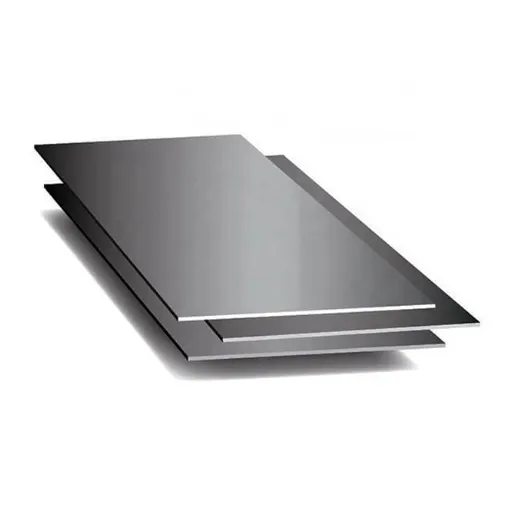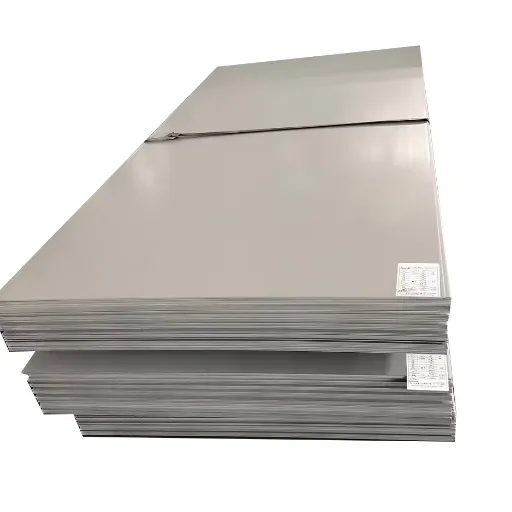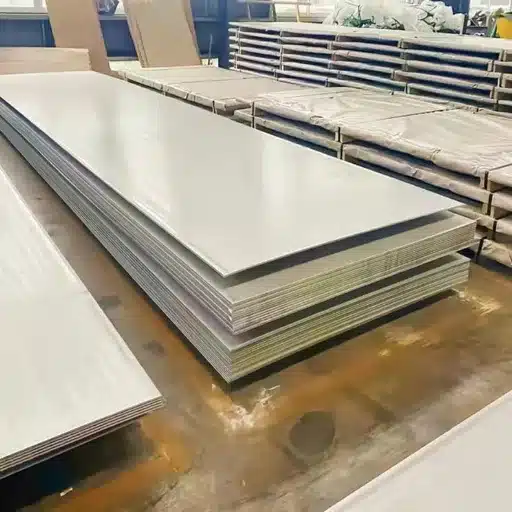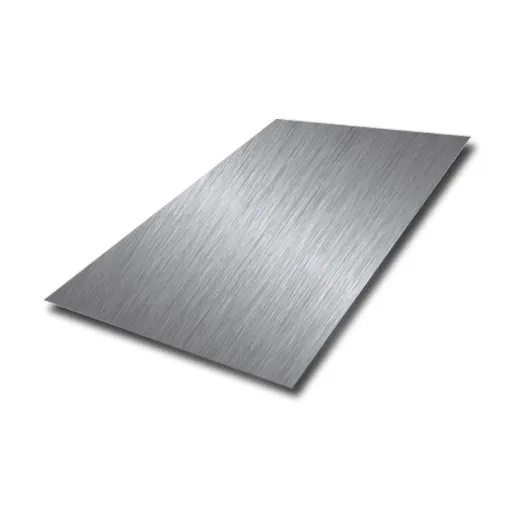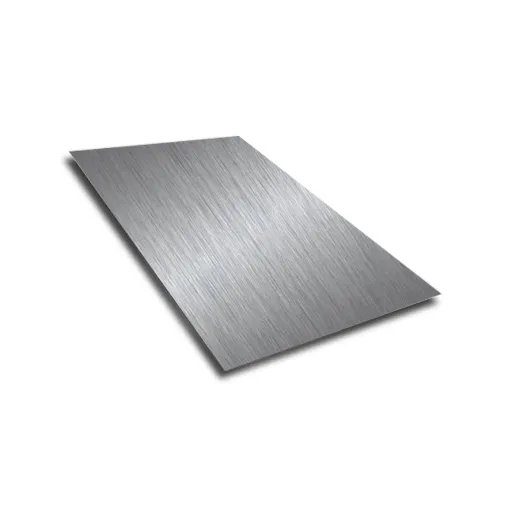The nature of construction, manufacturing, and design prompts one material to be doubling for durability, versatility, and sleek appearance. But did you know that the thickness and size of stainless steel plates in particular restrict what they can be used for? Be it a giant industrial project or a unique architectural building, knowing these dimensions and their use is the key. This guide will explain everything you need to know about the stainless steel plate dimensions, from their standard sizes to how plate thickness affects its performance, which will hopefully muffle its loud voice so you will be able to hear it clearly and make your own informed decision based on specific needs.
Overview of Stainless Steel Plates
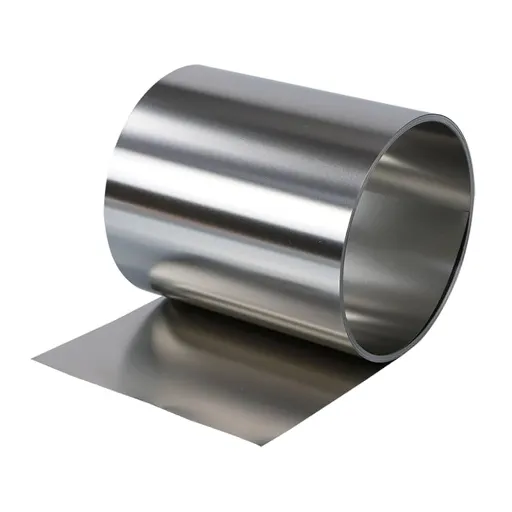
What are Stainless Steel Plates?
Flat-rolled stainless steel sheets are steel plates that have been made for capacity, corrosion resistance, and versatility in applications. Such plates are composed of steel alloys that should have at least 10.5% chromium in them to confer the getter properties into it. The chromium creates a very thin passive surface layer capable of protecting the plate and its surroundings from rust and damage, even under harsh conditions.
They are made in many sizes, thicknesses, and finishes for different uses. These plates find applications in a variety of industries such as construction, automobile, aerospace, and food processing because of their strength and hygienic properties. Depending on the thickness and grade, some are more well-suited for a particular application, with the thick ones being used more for heavy-duty work and thin ones being more versatile for manufacturing or decoration.
Resistance to high temperatures and chemicals is one of the key advantages of stainless steel plates, and such resistance is seldom lost in terms of structural integrity. At times, they are indispensable in projects for long-term reliability, such as in pressure vessels, bridges, and industrial equipment. Lesser maintenance needs and a longer working life imply big cost savings with time, thereby making stainless steel plates almost universally chosen for various uses.
Types of Stainless Steel Plates: 304 vs 316
Grade 304 Stainless Steel
304 is quite versatile and extensively used for good resistance to corrosion, ease of fabrication, and relatively inexpensive cost. It is best suited for applications where occasional contact with moisture and mild chemicals takes place, like kitchen equipment, food processing, and storage tanks.
Grade 316 Stainless Steel
The grade-316 stainless steel denotes a steel with molybdenum acting as another element to resist corrosion where high salinity or harsh chemicals prevail. Hence, 316 is used in marine, chemical processing plants, and pharmaceutical industries. The durability of 316 ensures its reliability where 304 would not suffice.
💡 Key Decision Factor: When considering the difference between 304 and 316, your environment and level of corrosivity may be an important factor to decide upon. If cost is a consideration and general functionality is expected, then 304 will do most of the time. For extended service in aggressive conditions, however, grade 316 is usually the better investment.
Common Uses of Stainless Steel Plates
- 🏗️ Construction: Due to their strength, durability, and corrosion resistance, stainless steel plates have widespread applications in construction. Their uses range from structural steel members to roofing and cladding. Also, architecturally, these plates are used in designs that demand modern infrastructure with an aesthetic appeal.
- 🍽️ Food Processing: When it comes to food processing and beverage equipment, stainless steel plates appear as the choice materials. It is because the stainless steel materials are highly hygienic, easy to clean, and resist bacteria building up. They make up food contact surfaces, storage tanks, and commercial kitchen equipment.
- 🏥 Healthcare: Healthcare and pharmaceutical industries are another set of applications. They require materials that would last frequent sterilization without degradation. Stainless steel plates serve well for making surgical instruments, medical devices, and laboratory equipment, thereby ensuring safety and longevity.
Standard Dimensions of Stainless Steel Plates
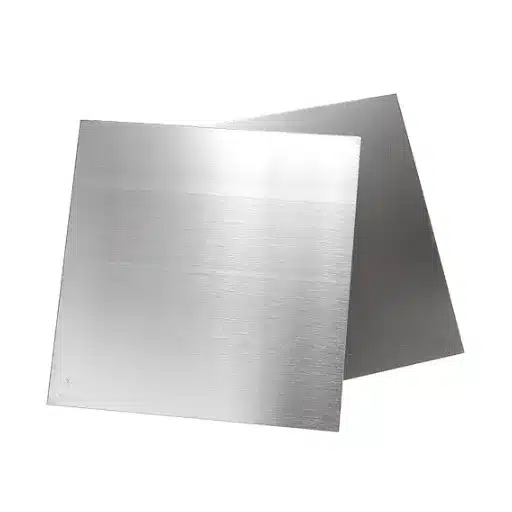
Typical Sizes for Stainless Steel Plates
| Dimension Type | Standard Range | Common Applications |
|---|---|---|
| Thickness | 3/16 inch to 4 inches (4.8mm to 101.6mm) |
Thin for decorative, thick for structural |
| Standard Size 1 | 48″ × 96″ (1219mm × 2438mm) |
General manufacturing, construction |
| Standard Size 2 | 60″ × 120″ (1524mm × 3048mm) |
Large-scale industrial projects |
For meeting the requirements of various industries like construction, manufacturing, treatment, etc., stainless steel plates are produced in different standard dimensions. Nevertheless, it is possible to order such plates in custom sizes.
🔧 Custom Solutions: With state-of-the-art technology like laser cutting, water-jets, or plasma cutting, suppliers offer a fully customized solution to maintain quality and precision. Because of such flexibility, stainless steel plates become essential in industries where design criteria may not be met by standard sizes.
Standard Thickness Options Available
Thin Plates
3mm – 6mm
Automotive panels, lightweight frames
Medium Plates
6mm – 20mm
Construction, heavy-duty enclosures
Thick Plates
20mm+
Industrial plants, machinery parts
Stainless steel plates come in all standard thicknesses for various areas of industry and commerce. The plates are typically ready from 3mm to 50mm or heavy, basing on requirements of the application. Thicker stainless steel plates of more than 20mm, generally found in the heavy advancing industries, are used in various areas in vascular industrial plants, machinery parts, and transport infrastructure as these accommodate a higher strength grade and durability.
Weight Considerations for Different Dimensions
📊 Weight Calculation: In order to calculate the weight of the stainless steel plates, they should be carefully analyzed under thickness, width, and length. Weight can be equated based on the density of the stainless steel, which is about 8 grams/cm³.
Example: A 1-inch thick stainless steel plate of 12 inches by 12 inches weighs about 40.5 pounds, which comes handy when the issue of weight limit arises in a civil or industrial project.
Accurate weight calculations are required for the purposes of transportation and installation. Weight above structural load capacity or weight of made transportation vehicles can lead to hazards and expenses. Modern online tools and calculators have made it easier to estimate the weight of stainless-steel plates for different dimensions.
In addition to mere weight consideration, overall structural integrity and functionality of a design are affected. Since these are decorative items, thin and light plates of stainless steel can capture more aesthetics without affecting the bulk. Generally, thick plates with heavy weight are necessary for load-bearing purposes and able to withstand heavy stress to ensure durability.
Custom Stainless Steel Plate Specifications
Factors to Consider for Custom Options
- 1
Material Grade Selection:You must ensure that the selected grade is appropriate for the environmental and operational circumstances of your project, whether that involves corrosion resistance or high-temperature applications.
- 2
Precise Dimensions:Plate thickness and dimensions should be precisely defined to conform to design tolerances and intended functions.
- 3
Surface Finish:Depending on the requirements, the finish type may be specified for the aesthetics or performance of the application: brushed, mirror polished, matte, etc.
- 4
Manufacturing Process:Further considerations relate to how the manufacturing process will fit with fabrication from cutting to machining, such as laser or waterjet cutting, according to budget and design complexity.
Applications of Custom Stainless Steel Plates
🏗️ Construction & Architecture
For architectural facades, roofing, and fabricated structural components, stainless steel plates offer adequate strength and aesthetic consideration. Stainless steel plates face harsh environmental conditions and hence become a prime contender for modern architectural designs.
🍽️ Food & Beverage Industry
The custom plates are used to manufacture the food processing equipment, storage tanks, and kitchen surfaces, as their surface can be scrupulously cleaned, and they offer no reactive qualities while conforming to statutory hygiene requirements.
⚓ Marine & Shipbuilding
Stainless steel plates find use in ship structures, offshore platforms, and subsea components because of their excellent anticorrosion properties and against saltwater corrosion, thus ensuring a long life in marine environments.
⚡ Energy & Power Generation
Stainless steel plates make heat exchangers, turbines, and power plants components, being able to withstand extreme temperature and pressure changes for efficient energy production.
🏥 Medical & Pharmaceutical
Sterilization and hygiene benefits of stainless steel make them suitable for surgical instruments, hospital equipment surfaces, and cleanroom surfaces. Being non-porous, it prevents the chance of contamination in critical environments.
Applications of Stainless Steel Plates Across Industries
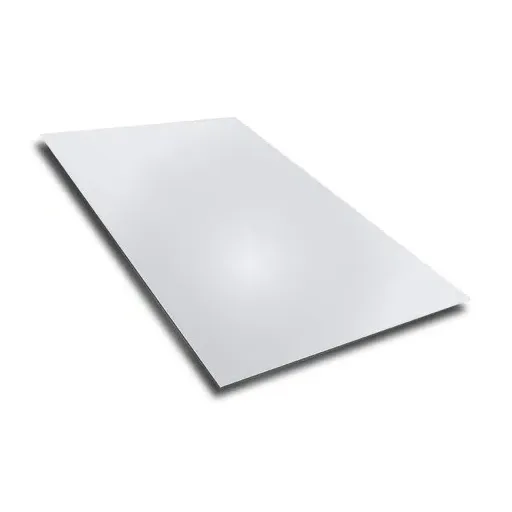
Construction Projects and Structural Applications
Due to the strength, durability, and corrosion resistance properties, stainless steel plates are of critical importance in construction projects and structural applications. These properties make them suitable for numerous environments and structures where long-term performance becomes an issue.
- 🏢 Building Facades and Cladding: From the stainless-steel perspective, plates are a modern cladding material for building facades. By virtue of their classy appearance and resistance to temperature, weather, and other physical phenomena, stainless steel plates provide choice applications for both aesthetic and practical purposes.
- 🌉 Bridges and Infrastructure: Stainless steel plates are utilized in bridge construction where high strength and corrosion resistances are required under marine or aggressive atmospheric attack. Thus a further benefit of all these properties is the reduction of maintenance costs and prolonging the service life of the structures.
- 🏗️ Concrete Structure Reinforcement: Reinforcement with stainless steel prevents corrosion inside the concrete and deterioration of the structures over a span of time, ensuring long-lived buildings and foundations.
- 🛗 Elevators and Escalators: Due to its corrosion resistance and strength, stainless steel is found in many structural components of elevators and escalators, so that their operation in high-traffic areas is reliable and safe.
- 🏠 Roofing and Structural Frames: Owing to their ability to bear high loads, stainless steel plates find use in roofing systems and structural frames, providing building structural integrity while imparting resistance against weather-related attacks.
Industrial Uses in Manufacturing
These stainless steel plates are deemed to be the most useful stainless steel items in industrial manufacturing since they are durable, corrosion resistant, and highly versatile.
🧪 Chemical Processing Equipment
Stainless steel plates see great utilization for construction of chemical processing equipment like storage tanks, reactors, and pipelines. The resistance of stainless steel to corrosion from harsh chemicals ensures the prolonged life of such processes and increased safety.
🍽️ Food and Beverage Industry
Stainless steel plates are regarded as indispensable in food processing equipment manufacture due to their non-reactivity and ease of cleaning. These plates will be employed for putting together food mixers, conveyor belts, and storage containers.
💊 Pharmaceuticals and Medical Equipment
Stainless steel plates stand very important in the pharmaceutical field where very stringent hygienic conditions are maintained. They are used in cleanroom equipment and surgical instruments and also in the production of medical devices.
🚗 Automotive and Transportation
Stainless steel plates are used to make components such as exhaust systems, vehicle frames, and even train cars that lend strength and resistance against the typical wear and tear of daily use.
⚡ Energy and Power Industries
Stainless steel plates support any advances of the energy sector by providing materials that must withstand extreme temperature and pressure from wind turbines to the nuclear reactor, power plants, etc.
Benefits of Using Stainless Steel Plates in Various Applications
🛡️ Corrosion Resistance
Resistant to corrosion and, hence, suited for environments that have moisture, chemicals, or saline formations. In marine and chemical industries, withstanding rust enables equipment to have an increased life span.
💪 Durability and Strength
Highly tensile-strength substances like stainless steel plates bear heavy loads and extreme conditions. Hence, these are used in construction, automobile, and aerospace industries that demand structural integrity.
🧼 Hygienic Qualities
A non-porous surface that prevents bacterial buildup and allows for an easy cleaning procedure is a prized attribute of stainless steel in industries concerning medicine and food.
♻️ Sustainability
Stainless steel can be completely recycled, significantly diminishing the effects on the environment. Around 80% of stainless steel that is consumed in present construction work is recycled.
✨ Aesthetic Value
These detergencies promote the polished and smooth appearance of stainless steel finishes with interiors and building works. It gives them a modernistic view, while still being functional and durable.
Conclusion and Best Practices
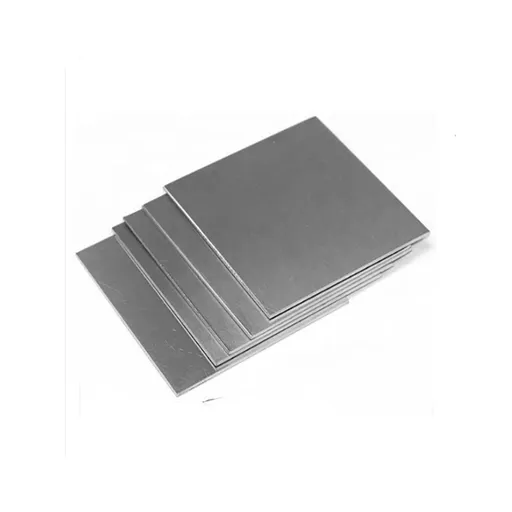
Selecting the Right Stainless Steel Plate for Your Project
When selecting the right stainless steel plate for the project, I always first think about the actual application and environment it will be subjected to. For instance, in cases where moisture or highly corrosive conditions might be involved, I must go for a grade having a higher corrosion resistance like the 316. Meanwhile, 304 stainless steel, being quite versatile and fairly inexpensive, would typically be the choice for those applications where suspicions of corrosive conditions are minimal.
I will also look at the mechanical requirements of a project in terms of strength, ductility, or heat resistance. Again, stainless steel plates come in a wide variety of these, thicknesses, and finishes. I need to be sure that the selection I make will fit within the functional considerations of my project. Where a structure is expected to be load-bearing, obviously, a thicker plate will be preferred; in decorative applications, more concentration will be given to finish.
Lastly, I take into consideration the budget and sustainability goals I might have. Stainless is an inherently sustainable material because it is strong and recyclable, but the grades and finish variations can affect the costs. Considering these factors with a consultation with material suppliers or industry experts, I make sure to give my client an informed choice that balances performance, longevity, and price for the further success of my project.
Maintenance Tips for Stainless Steel Plates
🧽 Regular Cleaning
Good maintenance will allow stainless steel plates to keep their durability and aesthetic value over time. Typically combining warm water with a mild detergent will fairly get rid of dirt and debris. Greasy smudges may require a bit more work; just use a non-abrasive cleaner or try a paste of baking soda and water.
⚠️ Important: Avoid the use of harsh chemicals such as those containing bleach or chlorine, for they can break down the protective passive film on the stainless steel surface. If scratches develop, restore the finish with a stainless steel polish or a fine abrasive pad, working along the grain.
Also, keep an eye on environmental conditions, as the presence of salt or pollutants can expedite deterioration and corrosion. In outdoor or high-humidity conditions, the application of a protective coating offers an extra defense. With straightforward care routines and correct cleaning products that suit them, stainless steel plates can keep their function for years.
Future Trends in Stainless Steel Plate Applications
🌱 Sustainable Building Materials
The stainless steel plates have witnessed a rising trend in green building projects owing to the fact of their recyclability and long lifespan. Architects and construction professionals are now beginning to specify stainless steel in their energy-efficient building designs so that the impact on the environment is minimal.
🏥 Advanced Healthcare Equipment
With rising demands for hygiene and sterilizable surfaces in healthcare environments, stainless steel plates have been utilized for medical equipment, surgical tools, and hospital infrastructure. Further promotion of their use is provided through the antimicrobial properties of some stainless steel alloys.
🚗 Evolution of the Automotive Industry
In the automotive sector, there has been a rise in the use of stainless steel plates for manufacturing lightweight and durable vehicle parts. Stainless steel is beneficial for electric-vehicle production as it provides materials that are both strong and sustainable.
🌍 Renewable Energy Infrastructure
In the renewable energy sector, stainless steel plates are utilized for wind turbines, solar panel frames, and hydroelectric plant components. Because of the corrosive nature of the environment outdoors or marine environment, stainless steel would be an ideal material.
✈️ Aerospace and Aviation Innovations
More and more aircraft will be built using a stainless steel plate with aerospace engineering because of its high strength-to-weight ratio coupled with heat resistance. These are crucial considerations for parts exposed to extreme temperatures and pressures.
References
-
Stainless steel in construction: A review of research, applications, challenges, and opportunities
This paper, published on ScienceDirect, presents stainless steel construction research and applications and includes the specification of stainless steel section sizes. -
Numerical modelling of stainless steel plates in compression
The study focuses on the structural behavior of stainless steel plates in compression, thus giving more insight into the dimensions and applications. -
Stability and design of stainless steel structures – Review and outlook
A thorough review of the structural use of stainless steel with focus on stability and design practices. - Click here to read more.
Frequently Asked Questions (FAQ)
❓ What are the popularly known stainless steel plate dimensions as found in the market?
Stainless steel plates come in lots of sizes, with most standard sizes ranging from 4 by 8 feet to even bigger sizes, sometimes going up to 5 by 10 feet. Thicknesses of stainless steel plates vary, but the more common ranges are from 1/16 inch to 1 inch-thus giving room for quite a few applications.
❓ Is the thickness of the stainless steel plate going to affect its use?
The thickness of stainless steel plates matters because it influences strength, weighing, and durability. The thicker ones are usually put into structural applications, whereas the thin ones might well be put into decorative or rather light-duty ones. For these reasons, getting their thickness correct becomes paramount in any decision on dimensions of stainless steel plates for a particular application.
❓ What is the difference between hot rolling and cold rolling of stainless steel plates?
Hot rolled stainless steel plates are created at elevated temperatures. The temperature varies between 1000 DegC to about 1250 DegC for the processes. Thus, this makes the metal easier to shape/fabricate and has a rough surface. Cold rolling is carried out at room temperature, and the product gains finer surface finish with tighter dimensional tolerances.
❓ Annealing and pickling can be done on stainless steel plates?
Yes, stainless steel plates can undergo annealing and pickling. The process of annealing entails heating, which relieves internal stresses in the plates and improves ductility. The pickling action removes any surface oxides and impurities. It also improves the surface finish of the plates, preparing them for further fabrication or finishing.
❓ What kind of factors are considered for stainless steel plate dimension selection in construction?
When selection of dimensions in stainless steel plate is to be made for a certain construction, the load the plate is to bear, environmental influences upon the plate, and the use itself are all taken into consideration. Width and thickness of the plates must correspond to the provisions in the industry manual or project specifications where the installation is to be carried out in order to maintain structural integrity.
❓ Are large stainless steel plates available for industrial use?
Yes large plates of stainless steel exist and are typically applied in industrial applications where strength and endurance are considerably needed. These plates can be fabricated in different thicknesses and lengths conforming to heavy-duty project requirements.
❓ What are the common sizes of stainless steel sheets generally kept in stock?
Dimensionally, stainless steel sheets are mostly kept in stock 48 inches by 120 inches or 60 inches by 120 inches. Such sizes are commonly preferred in several applications where design or fabrication might have some flexibility.
❓ How can one find the right working stainless steel plate dimensions for his project?
The working stainless steel plate dimensions are determined by the requirements pertaining to loading, satisfaction of environmental exposure, or even consideration of aesthetic requirements. Suppliers operating with a variety of sizes and thicknesses of stainless steel plates can always assist you in selecting the dimensions most comfortable for your needs.
❓ What is the importance of surface finish in stainless steel plates?
The surface finish of stainless steel plates is paramount for ensuring the function and aesthetics of a product. The smooth finish that we are familiar with is generally produced by cold rolling or polishing and is specified where corrosion resistance and good appearance are important. Otherwise, grit finish might be selected where holding or adhesion is required. Therefore, it is very important to consider the application of the stainless steel plate dimensions when choosing the surface finish.
🎯 Key Takeaway
Understanding stainless steel plate dimensions is crucial for project success. From standard sizes to custom specifications, the right choice balances performance, durability, and cost-effectiveness. Whether for construction, manufacturing, or specialized applications, proper dimension selection ensures optimal functionality and longevity in your stainless steel projects.

